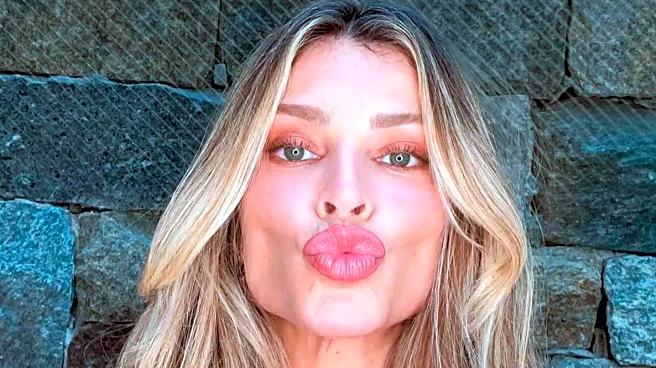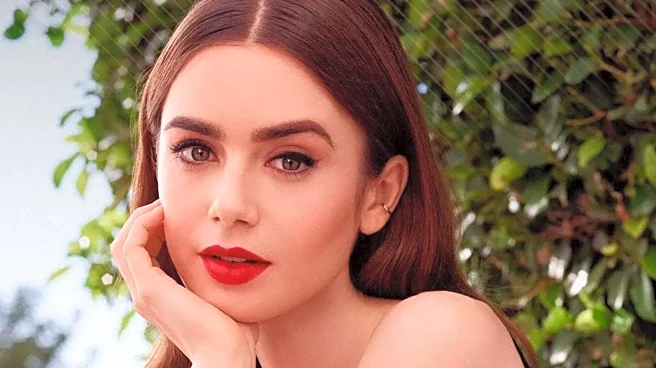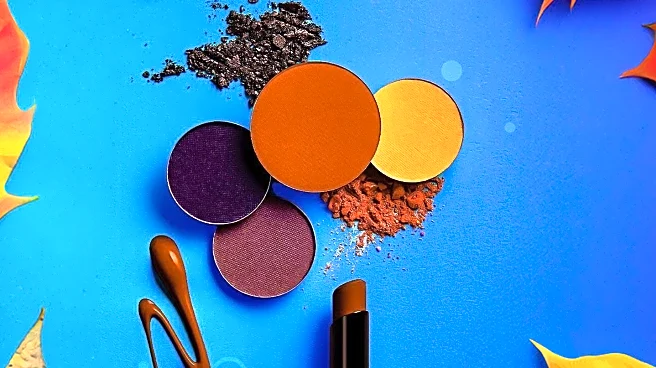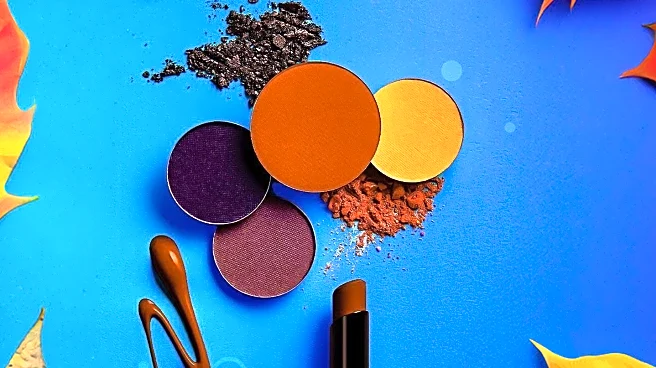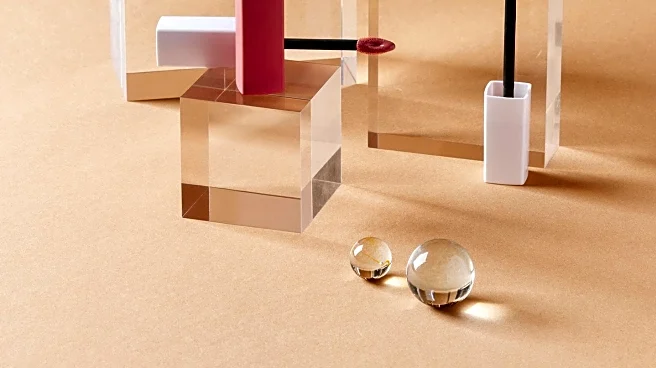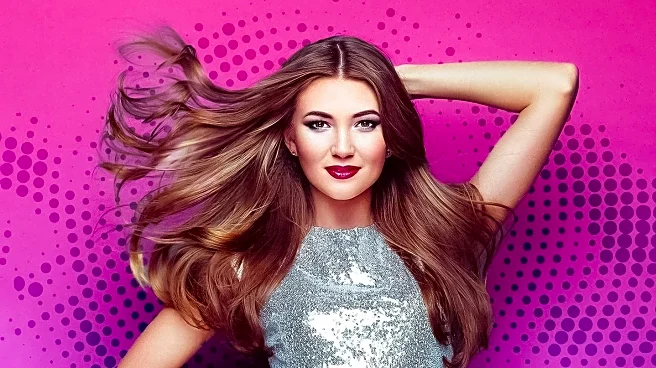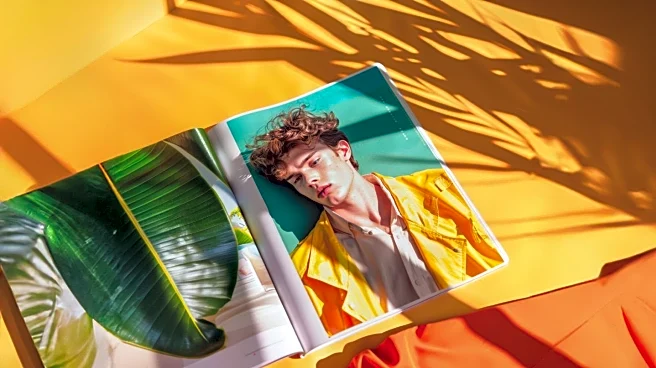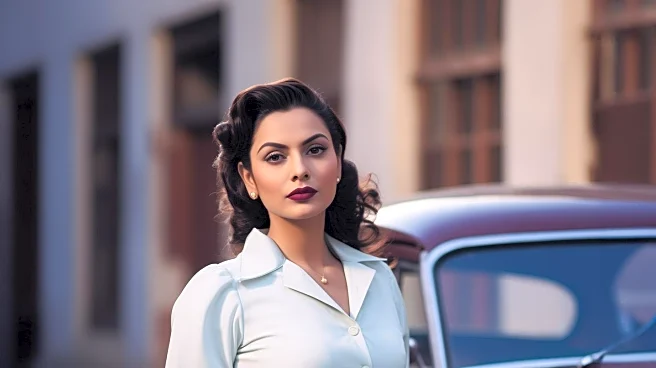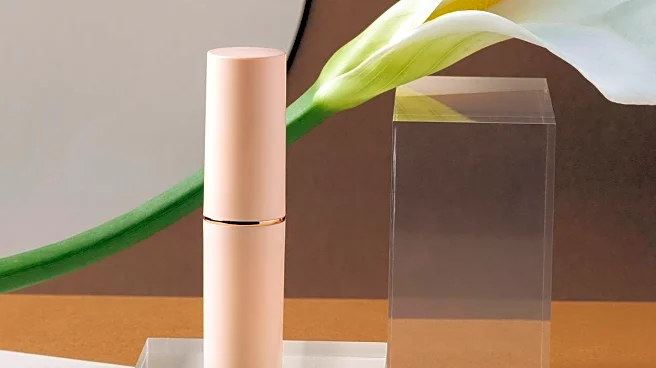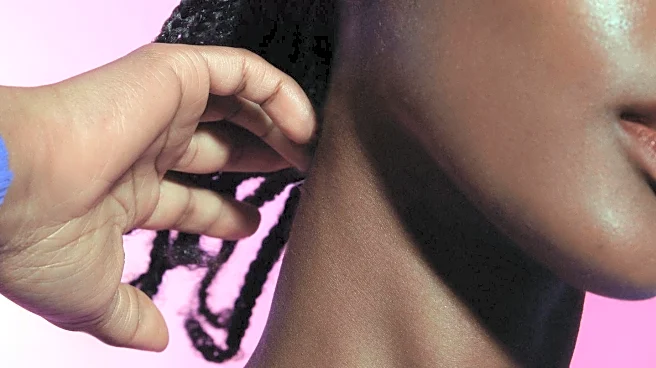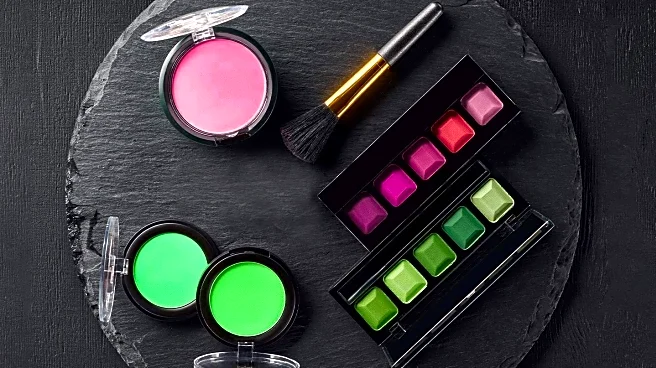What's Happening?
Vogue's latest edition of 'Beauty Marks' showcases the most striking celebrity beauty looks of the week, emphasizing a trend towards vibrant colors and maximalist styles. The feature highlights various beauty moments from the fashion and pop culture scenes, including nail art, hairstyles, and makeup trends. Notable mentions include Alex Consani's pink ruffles paired with rose-tinted glam, and Jenna Ortega's gothic glamour with a chalky blue eye. Nail artist Heather Errington drew inspiration from Amy Guy for a handpainted French manicure, while Zola Ganzoright created reverse polka dots for Sydney Sweeney. The article also notes Margot Robbie's return to the red carpet with a chic silk cut and Michelle Williams' fresh-faced look with a neat up-do.
Why It's Important?
The focus on bold and experimental beauty trends reflects a broader cultural shift towards self-expression and individuality in fashion and beauty. This trend is significant for the beauty industry as it encourages consumers to explore new styles and products, potentially driving sales and innovation. The emphasis on celebrity beauty also highlights the influence of public figures in setting trends and shaping consumer preferences. As celebrities and their stylists experiment with new looks, they inspire fans and followers to adopt similar styles, impacting the beauty market and its offerings.
What's Next?
As these beauty trends gain traction, it is likely that more brands will introduce products that cater to the demand for vibrant and experimental styles. Makeup artists and beauty influencers may continue to push the boundaries of traditional beauty norms, leading to further innovation in the industry. Additionally, the ongoing coverage of celebrity beauty by major publications like Vogue will keep these trends in the public eye, encouraging more widespread adoption among consumers.
Beyond the Headlines
The celebration of maximalist beauty trends also raises questions about inclusivity and representation in the beauty industry. As the industry evolves, there is an opportunity to embrace a wider range of beauty standards and cater to diverse consumer needs. This shift could lead to more inclusive marketing campaigns and product lines that reflect the varied preferences and identities of consumers worldwide.
